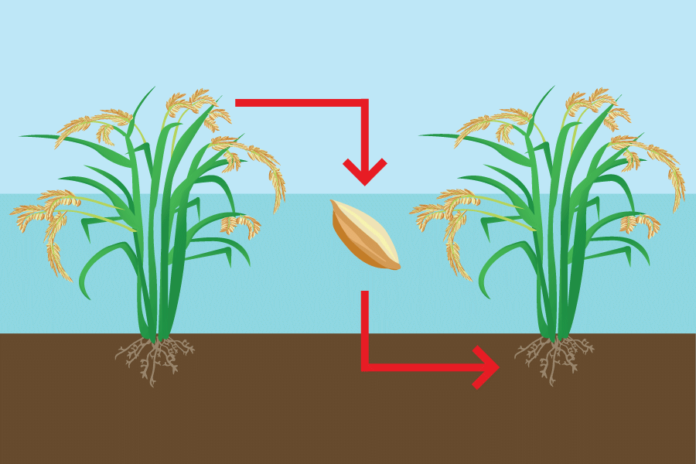UC Davis researchers find a way to replicate crop plants through seeds
Researchers at UC Davis have discovered a way to clone crop plants, making resilient crops more available to farmers everywhere.
“We developed a method to make rice seeds that are clones of the mother plant,” said Venkatesan Sundaresan, a professor of plant biology and plant sciences at UC Davis. “So farmers who grow high yielding hybrid crops can use the seeds from these hybrids for the next season, instead of having to purchase them again. This is particularly important for farmers in developing countries who can’t afford the high cost of hybrid seeds.”
The key to effectively cloning the rice plants is the Baby Boom 1 or BBM1 gene. This gene allows fertilized cells to turn into embryos. By causing egg cells to express BBM1, egg cells can grow embryos that would otherwise not be possible without fertilization.
“Baby BOOM 1, or BBM1 as we call it in the lab, is a transcription factor,” said Imtiyaz Khanday, a postdoctoral researcher in the Department of Plant Sciences at UC Davis. “Transcription factors are master regulators of other genes. BBM1 is expressed in the sperm cell but not in the egg cell. If we turn on its expression in the egg cell, it leads to embryo formation, bypassing the need for fertilization. It is like befooling the egg cell that it is already fertilized. This also makes the sperm cells obsolete for reproduction.”
The current process, however, has a lower efficiency.
“This work showed that it is possible to make clonal seeds, but it only happens about 30 percent of the time,” said Debra Skinner, a researcher in the Department of Molecular and Cellular Biology. “So the next step would be to see whether it is possible to make that number higher so that the process is more efficient.”
With sexual reproduction, beneficial traits in crops can be lost, making the discovery of effective asexual reproduction in crop plants important for global food production.
“With the world population expected to reach 10 billion by 2050, the food production has to increase in the same proportion,” Khanday said. “What can be more satisfying to work on than helping to achieve the goal of food security for the growing population, especially in the developing countries?”
Written by: Kriti Varghese — science@theaggie.org




